Review GSM phone Neonode N1m
Package:
- Handset
- 1 GB SD card SanDisk
- Stereo headset
- Charger
- USB cable
- Short manual
Neonode
N1m. Live pictures
Official photos of
Neonode N1m
Probably, there is no more famous long lasting device in the World than the Neonode N1. Announced more than three years ago, it was much discussed, delighted, was forgotten for some time, remembered again and discussed once more.

After the announcement the device didn't appear on the specified date, the interest to it gradually decreased and the device became a phantom not fated to reach the shop counters in the customer's eyes. The Swedish company roused the interest by recurring press-releases. Thus, in 2003 the company issued a special press-release telling it wouldn't announce a new launch date and the device would get into sale as far as possible.

In the end of 2004 when the phone finally got to sale there were little people who believed the product was
real and it would reach the counters. Though, a "counter" is rather relative - the device is free
to order only via the Internet and only in Europe, the full list of the countries is available on the
company's site. The Commonwealth of Independent States form exception, the phone will be sold not via the Internet but in retail there since the summer.

Neonode announced the Neonode N1m in the first quarter of 2005 - the smartphone differs from the previous one in triple GSM band instead of the double, the presence of a vibracall, a megapixel camera, a new Windows CE 5.0 core. This very version got into our hands for tests, so, sharing the impressions.
At the time the Neonode N1 was only planned on the very early stage (2001 - 2002, most likely) the technologies and operating systems present for that moment prevented from creating a miniature device with a touchscreen. The MS Smartphone 2002 perspectives were rather hazy and also the support of a touchscreen was absent. The Series 60 platform also didn't support it. And touchscreen devices were too large, had some technical restrictions and were oriented on working with a stylus for that time. Something different both in technical and software meaning was necessary for a miniature device with a touchscreen that one would work with a finger. And mainly because of this the developing process got so long.
The Windows Compact Edition (Win CE) operating system is a cut version of a desktop OS (basing on an old Windows NT with a seriously remade code) and also called built-in. As one could have already guessed, it is intended for integrating into various devices - fridges, cars, ATMs, various terminal devices. As we all see, there are no strict demands from the final device, which may be a coffee-machine connected to the Internet. Windows Mobile (earlier - MS Pocket PC and MS Smartphone) operating system bases on the Win CE core (the way the Nokia Series 60 is based on the OS Symbian core) but only having another user interface (Shell) and a different system library. Some extra information may be found on a
Microsoft site.
The Windows CE core, over which a personally developed by Neno interface was built, was chosen for Neonode. Thanks to that a question of the touchscreen functioning at a close distance and one hand control was solved. On the other hand - the software is not compatible with Pocket PC and too little to go with Windows CE (some programs still run). That would be more logical to call the Neonode N1m a phone and the company positions it this way. But the third party software present, open and available software for program developing coming with a limited list of preinstalled applications doesn't allow calling it a phone. It is like balancing between a phone and a smartphone. We'll return to the software question in a corresponding part.


The device has a black plastic body resembling the Samsung D500 in design (which is very strange). But that is a candybar but not a slider. It has no moving keypad and control is possible with a finger touching a sensory screen. The body and its plastic look cheap if not saying more. The plastic is smooth but doesn't slide in a hand. The assembly quality is not bad showing no backlashes.
The device is miniature in size and if put on a credit card will close it exactly.

It is shorter than a usual average phone due to the absence of a keypad, though is wider and a bit thicker. Among the smartphones and communicators (look at the picture showing the device near to the Palm Treo 650) with a touchscreen the Neonode N1m has no rivals in size and weight (88x52x21 mm, the weight forms 94 grams). That is the smallest device felt light in a hand.
The device will suit both a man's and a woman's hand being comfortable to hold. Generally speaking, the dimensions and the form are so that one may reach any point of the screen with his thumb.

A white 4D joystick is placed under the screen. The button motion is very tough and one should get used to it. In many applications the joystick is useless not working there at all. And any actions with the interface may be committed without it. Though the joystick may be useful, for instance, in a Game Boy emulator. There are two very small buttons to the left of the relatively large joystick - a "tick" and a "cross" (confirm and cancel). These buttons are used seldom when working with the interface, especially a "cross".

An SD card slot is placed on the left side and a 1 GB card was included into the kit. When put into the slot the card is not closed with a shutter, a corner always projects a couple of millimeters not making any discomfort but giving a slight minus to the appearance of the device.

And a SIM card with a slot for it on the bottom end projects a bit also. The card is plugged out but the move of the lever blocking the SD card from taking out at the same time. A miniUSB output serving for synchronization and charging is also here.

Also let's mention a stereo output (standard 2.5 mm) with earphones included into the kit specially for it, the mp3 quality is quite acceptable (for the earphones in the kit, of course).

There is nothing on the top end. The loudspeaker is placed on the back panel as well as the camera. You would be probably surprised at the phone is to speak on with the screen outside. That is some way unusual to go along the street with a thought any passerby may look into your phone, look up the number or a caller's photo. You should get used to or use the headset. There is one more way, close the screen with your palm, as the dimensions allow it.

Camera
The camera is 1.3 MP physically, but due to certain hardware restrictions the maximum resolution got is 1024x1024 pixels. All the possible resolutions are:
- 1024x1024
- 640x480
- 320x240
- 160x120


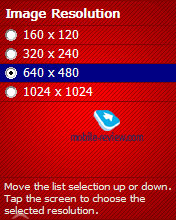

You can adjust the contrast, brightness, choose the lighting parameters manually. The screen serves as a viewfinder ad you need only touch it with your finger to take a photo.
Speaking about the picture quality we can call it average, look at the samples. The device has much to aspire to the Nokia 6680 (the leader among the smartphones in the quality of an integrated camera), though as compared to the HTC Magician the quality is not much worse.
 |
 |
(+)
enlarge, 1024x1024, JPEG |
(+)
enlarge, 1024x1024, JPEG |
 |
 |
(+)
enlarge, 1024x1024, JPEG |
(+)
enlarge, 1024x1024, JPEG |
 |
 |
(+)
enlarge, 1024x1024, JPEG |
(+)
enlarge, 1280x960, JPEG |
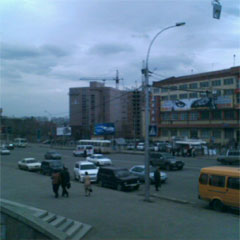 |
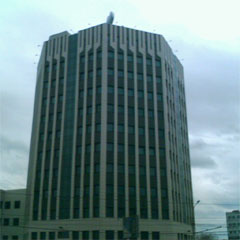 |
(+)
enlarge, 1024x1024, JPEG |
(+)
enlarge, 1024x1024, JPEG |
The camera can't record video.
Battery
The battery integrated is 1400-mAh Li-Ion, it is not removable and that is a minus. Averagely, the device we had worked for 2-3 days in case of 10 minutes of talks a day. The smartphone worked for a day in case of much talks (20-30 minutes a day), an hour working with other applications, 30 minutes of games and two hours of mp3. Thus, using the smartphone actively account on charging it everyday, using less actively will lead to recharging once in 2-3 days. The battery life is average.
Interfaces
There is no Bluetooth in the phone and that makes one of the main disadvantages. Wi-Fi is planned only in the next version of Neonode N1. Only GPRS stays from the wireless interfaces. Wire interfaces are worth a separate talk.
Memory slot. No hot change is possible, since the system pattern is kept on the card and every new one should contain the pattern (speaking plainly, the operating system is kept on a card as well as a user's data). SDIO cards can't be used for he same reason (the standard is not supported officially). Cards of more than 1 GB are not supported either. MMC cards aren't supported.
As we have already said, the Neonode N1m has a standard miniUSB output. A cable for synchronization with a desktop PC is included into the kit. The smartphone is possible to charge from USB. If turning the device off and connecting it via USB, it would be indicated as an outer drive with no drivers necessary (mass storage device) that is a good advantage.
Screen, working with the interface
The most interesting and unique in the smartphone is its sensory screen and the interface intended for working with a thumb. At first sight nothing special in characteristics - 2.2" diagonal, TFT display, 176x220 pixels, 65K.
Imagine a hand dryer. You hold your arms in a certain distance and thus turn the stream of a hot air on. There is another type of hand dryers - you press the button to make it work. And the same about touchscreens. The majority of them mean you will press a certain part of the screen with a stylus, thus the point of your pressure is registered. These displays are not intended for work with fingers - low exactness, pressure on the screen is necessary. There is another system used in Tablet PCs requiring a magnetic tip of the stylus. This system is even more not intended for working without special instruments.
The Neonode N1m is equipped with a sensory system comparable to sensory indicators for hand dryers. The edging of the screen has IrDA sensors (9 vertically, and 8 in horizontal line) and the rays go along the screen in the distance of 0.3 mm. Touching the screen you block some of the rays and thus the cursor position is registered. The principal difference from usual touchscreens is you do not need to apply your power, just a slight touch. The speed of the second touch is higher and, what is strangely enough, the preciseness is also higher. Pressing a usual touchscreen you like make a spot and the contact area is smaller when touching. And let's admit the screen of the Neonode N1m gets marked not as fast as we expected.
The whole interface (the Neno shell) is built on the idea of thumb control. Menu navigation, entering text. For instance, to cancel a call you need to draw from the right to the left and this gesture means canceling any action in the system (I'll repeat just touching the screen slightly, not pressing). To accept - from the left to the right, that mans confirmation.

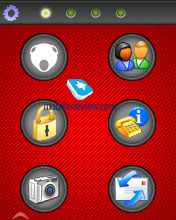
To call the menu, draw from the bottom up in the left side of the screen when in the standby mode. General settings - the same gesture in the right side. Moving along the menu bookmarks - from the left to the right in the upper part of the screen. And thus in all the installed programs. This way of control seems unusual at the beginning but one will get used in a day and then it seems very comfortable. SMS and phone numbers are entered with no mistakes and troubles.
The system used in the Neonode N1 is unique. The people who got acquainted with the interface showed real interest towards it and they all said there was no similar way of control in any other device.
Software
We'll tell about the programs present in the Neno shell. Time, date, battery charge, operator's name and signal level are shown on the start screen.
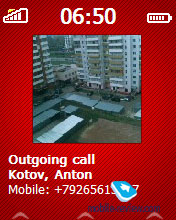
A caller's photo is shown at the call if it is present, his name, number and its type as well.
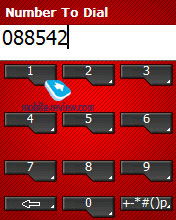
Dialing a number - using a virtual keypad, then a confirmation (with your finger from the left to the right) and that's all.
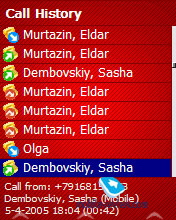
Call log is the maximum functional showing the call type, the number, precise date and time and the duration of the call. Calling the log is possible by pressing the hardware confirmation button (a "tick") in the standby mode.
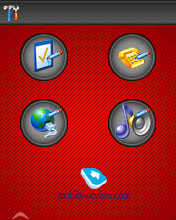


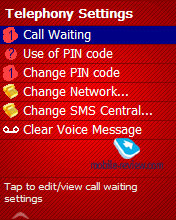
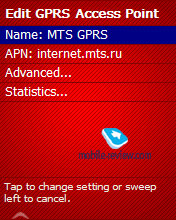
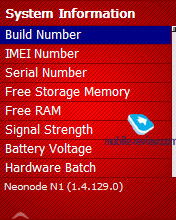
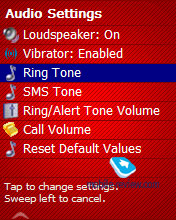
Settings. You can set time, date and time zone. GPRS settings are also here like system information. MP3 melody can be set as a call signal.
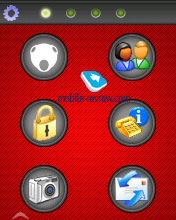
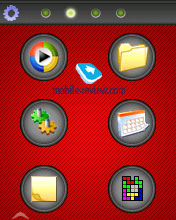
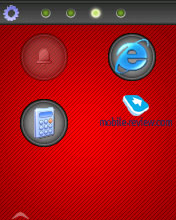

As you can see there are only four bookmarks in the main menu. These are installed programs. The last bookmark is selected files, programs, it is empty from the beginning.
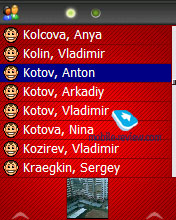

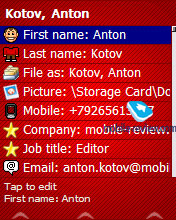

Contacts. A note pad possibilities equal the desktop version of MS Outlook, they are synchronized with no troubles using Active Sync. There are no problems with Russian contacts. You can assign the most frequently used numbers to a separate bookmark.

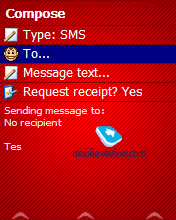
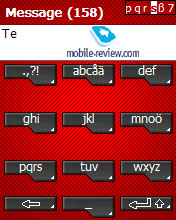
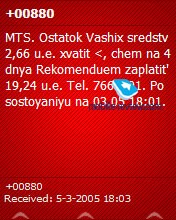
Inbox. Incoming messages (SMS and MMS). Nothing special to say about. Concatenated messages are supported, no problems with Russian, English T9.
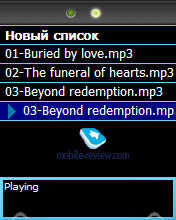


Media Player. Applications for viewing mpeg2 and WMV files, listening to the compositions. The program is limited functionally, only basic possibilities are supported.
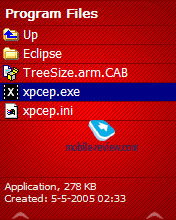

File browser. Basic operations with files that allow transfer, delete, rename them, create a new folder, but not more.

Active applications show the list of the running programs. Unnecessary ones may be stopped.
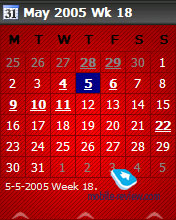
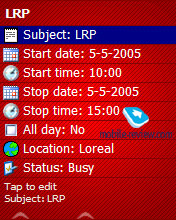
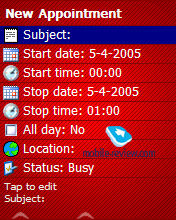
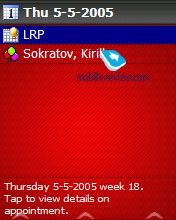
Calendar. May be synchronized with a desktop PC with no troubles. It is similar to the Windows Mobile version in functions (in the number of fields, appearance).
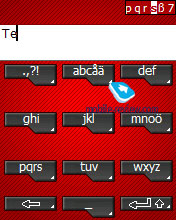

Notes. Text notes, not more. They are not synchronized with a desktop PC.
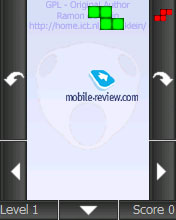
Tetris. Is a famous game for logics. It is comfortable to play in using a touchscreen (the screen is divided into 5 areas, 3 directions and 2 actions).
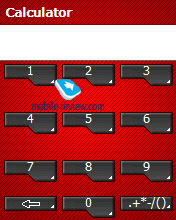
Calculator. That is a usual calculator with no peculiarities.

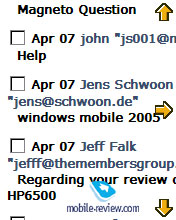



Internet Explorer. Internet browser. It is controlled with a thumb, moving using a joystick. The whole page is not shown in a single column, thus you'll need to use a horizontal scrolling, which is sometimes uncomfortable. No problems with showing Russian codings.
The set of third party programs is being gradually widening. A main client, a Beta Player (viewing video), Game Boy emulator,
Internet pager have already appeared. You can see the list of programs on the main site of enthusiasts devoted to Neonode www.redneo.com.
Impressions
The connection quality rouses no cavils. The signal level and vibracall are average. It is better to set an MP3 composition as a call signal. Though the call may still be missed in a noisy room or in the street.
If considering the device as a usual phone then some misbalance is observed. On the one hand the phone book, a calendar and a call log possibilities are the maximum. On the other hand - there is no installed mail client, no EMS support, video recording, and only one preinstalled game. Let's remind the manufacturer positions the device as a phone and the absent possibilities are promised in the future software versions that are available for free on the company's site. If treating the Neonode N1m as a smartphone then the number of third party programs is still limited, but new developments appear gradually.
The peculiarities of the phone are small size, unique touchscreen having no analogs. The concept has great perspectives and we hope in the Neonode N2 its potential will be fully realized. The main wishes are Bluetooth support, integrated mail client, working with office documents (important for business users and company orders), using gestures, for instance, a spiral drawn on the screen calls a mail client, and, of course, QVGA-screen.
For the moment of the review writing the Neonode N1m cost 520 Euros or 655 USD (including shipment and 1GB card) in the official Internet shop. With the card of 64 MB the device costs 454 Euros or 572 USD. That is expensive even despite the screen is unique. For this money you can buy the HTC Magician (let alone contract buying) that also may be worked with a thumb but not so comfortably. At the same time its functionality is higher (integrated Bluetooth and much more third party programs). With the current price the device is popular only among the gadget worshipers but not mass. The absence of a mail client, office programs are a serious restriction of the promotion on the company market. The appearance of Wi-Fi and VoIP application, integrated mail client with a possibility of synchronization with a company MS Exchange server, a possibility of viewing attachments, integrated cryptosecurity measures - only these factors can make the Neonode (one of the next versions) perspective on the company market.
The deliveries to the Commonwealth of Independent States are planned on the summer. The price will form 1000 USD in the first month of shipments and then the prices will get equal to European ones. Before the retail price fall to 400 USD or lower it's impossible to speak about mass shipments.
Description:
- Class: smartphone
- Position in the line: starts
- Operating system: Windows CE 5, UI Neno (Shell, interface)
- Processor: ARM 922T 220 MHz
- RAM: 16 MB
- Flash: an SD card used fro keeping a system pattern
- Interfaces: SD slot (max capacity - 1 GB, no MMC support), USB 1.1 client
- GSM 900/1800/1900 GPRS class B
- Screen: TFT 2.2", 176х220 pixels, 65K, a unique touchscreen for working with a finger
- Camera: 1 MP (1024x1024 - max picture resolution), no video recording
- Battery: not removable Li-Ion capacious of 1400-mAh
- Dimensions: 88x52x21 mm
- Weight: 94 g
Anton Kotov (anton.kotov@mobile-review.com)
Translated by Maria Mitina (maria.mitina@mobile-review.com)
Published — 18 May 2005
Have something to add?! Write us... eldar@mobile-review.com
|


































































